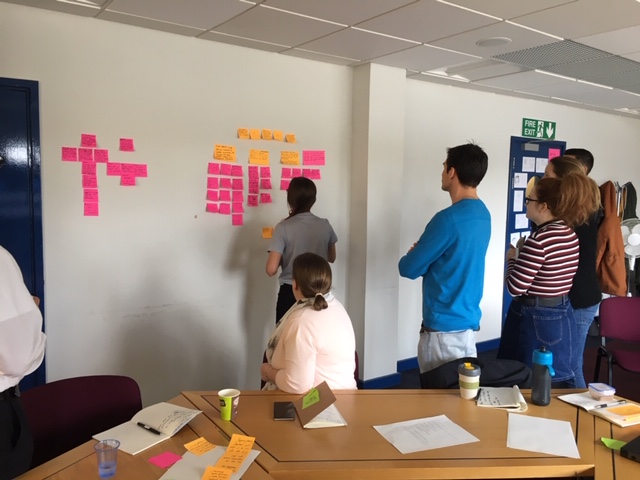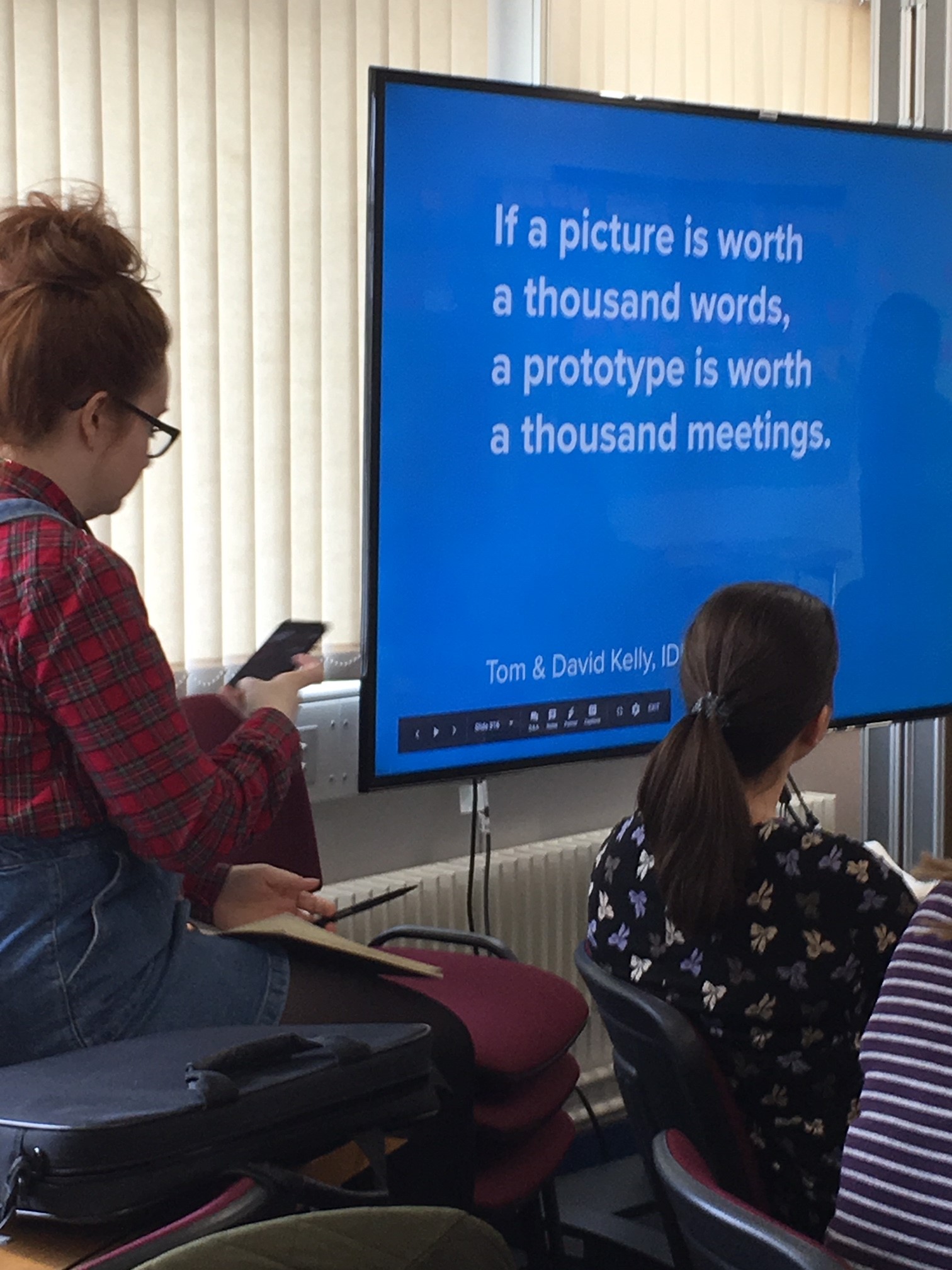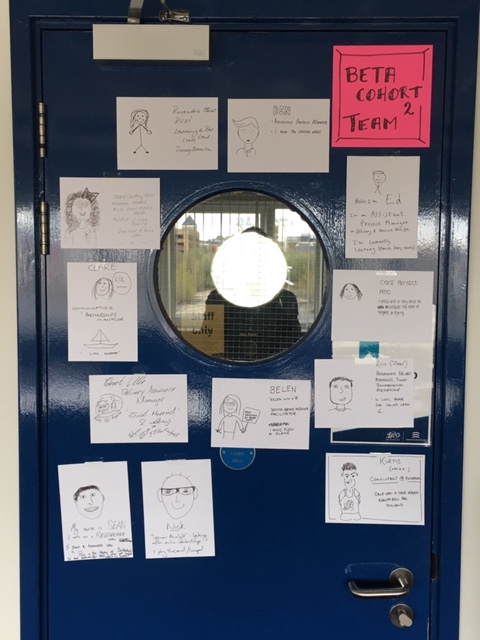Last year we launched Futures Academy in partnership with FutureGov, offering a group of our staff from different parts of the council, an intensive introduction to user-centred design.
This was exhausting, exhilarating and ultimately, enlightening. It helped us test our assumptions, trial new ways of working, and then decide how to scale up our decisions.
At the beginning of April this year, another nine brave Essex employees took the plunge, becoming our second Futures Academy cohort.
We gave them five days, away from their normal offices to experiment with service design ways of working, like problem definition, user research, synthesising insights, prototyping and testing.
We’ll leave it to Ruxie, Ben, Sean, Rob, Nick, Ed, Courtney, Clare and Clare to share how they got on.
It was an exciting, exhausting, challenging, scary and awesome experience. One I would recommend to anyone interested to get out of their comfort zone.

Day one: Discovery
The first day was never-wracking. Before we’d really had the chance to start getting to know one another we were given the problem we were going to be working on: people’s experience of registering a birth in Essex.
On paper everything looked fine, the service was meeting its key performance indicators and statutory obligations. Maybe there wasn’t a problem to solve.
But then we started challenging the brief. This took the form of a group session, establishing the gaps in our knowledge and possible user-research questions we’d like to ask.
For me personally, the whole week was amazing, and I felt I learnt a lot that I can share with my fellow colleagues from mapping to researching to interviewing.
Day two: Understanding
We’d been given our problem, but now we needed to understand it. In service design there are three ways to build understanding, research, research and more research.
We spoke to the service. We spoke to service users. We quickly realised that our first assumption that as long as the service met its targets there wasn’t a problem to solve was totally wrong.
Looking at the service from a user’s perspective made us realise we could be doing so much more.
I am looking forward to actually putting some of the processes into play! I am jealous of anyone who gets to do it again and I’m still doing it!

Day three: Synthesis
Time to make sense of the chaos. We took all the information we’d collected from our research and interviews and tried to group it into insights and themes.
We sat with people from the service and tried to map the user journey, identifying potential pain points, while also looking at what was required by law.
Then we added all this to our infinity map, along with our other research findings. We used this to test out our hypotheses from day one.
Futures Academy was a fantastic learning experience for me, as someone completely new to service design. It’s changed the way I look at any given service by challenging my perception around what users need versus what they want.

Day four: Picture this
With all our ideas mapped, it was time to share them. We learned how to sketch them out and pitch them to the service. Then we roleplayed them and voted on which one to take through to prototyping.
Roleplay
Roleplaying through the process of registering a birth really helped us pick up on elements of the user journey that would get missed in process mapping and interviews.
Registering a baby is stressful, not least because there’s often a baby there. There’s sometimes confusion about the documents you need to bring. This led us to a new focus our concept on what’s needed at the registration meeting.
Ideation
We were encouraged to ‘consider the ridiculous’ to put together proposals. This was so liberating, and led to really strong ideas from the team coming together far quicker than if we’d worked in the normal way.
Pitching ideas and dot voting
When choosing our ideas we purposely went for a mixture of easy, quick wins, as well as some more ambitious ideas to really challenge ourselves. This felt a million miles away from the more constrictive cost-benefit analysis we normally use to take decisions.
It was also really refreshing to base ideas on the user’s experience. This felt like a real culture-shift, especially because all the ideas were chosen democratically. We put sticky dots on the post-its that we liked best. This gave us common-purpose, finding the best outcomes for the user, rather than focusing on whose idea we were choosing.
“It’s completely shifted my mindset on how we build our services and the role that our end users should play in the process and it reminded me of why I work in local government.”
Day five: Prototyping
We took the most popular ideas and started to see how we could test them with the public. We created prototypes out of everything and anything from toilet rolls to shoe boxes, hitting the streets of Chelmsford to find users to test them with.
A lot of us found the idea of taking out a hastily-assembled prototype made out of toilet rolls and shoeboxes to test with the public incredibly scary. But, actually the model of our shoebox office, with post-it notes for cash and drawn on people went down surprisingly well.
We realised that instead of spending weeks polishing a first draft, it’s better to get out there with our rough and ready Blue Peter model and test it with users. If it works, then we finesse, if it doesn’t we think again.
Hitting the streets with cardboard boxes for prototypes is not where I saw the week ending, however the value was abundantly evident; witnessing how someone interacts with a newly designed service is priceless in determining whether you have achieved ‘human centred design’ and can make or break your idea.

What now?
We learnt that Agile isn’t just a methodology, it’s an approach that allows you to focus on user-needs. This can be applied in any area that we work in.
Now we’ve got the skills we need to go on to our next phase. We’ll be tackling another real-life problem, this time over eight weeks. This will be self-led, but we’ll be getting support from our mentors at Futures Academy. We’ll let you know how we get on with this more detailed work.
In the meantime there’s plans for another three Futures Academy programmes this year. If you’re interested, let us know.
Leave a comment